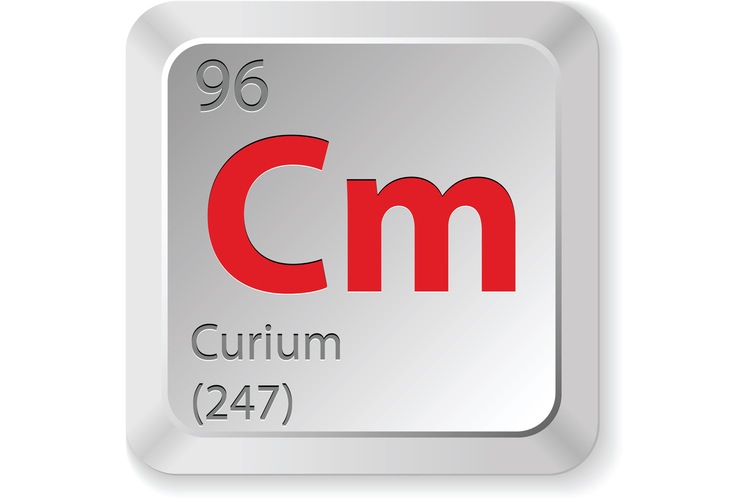Facts About Curium

Atomic Number: 96 Atomic Symbol: Cm Atomic Weight: 247 Melting Point: 2,453 F (1,345 C) Boiling Point: 5,612 F (3,100 C)
Word origin: Curium is named after chemist and physicist Marie Curie and her husband, Pierre Curie, who were pioneers in understanding radioactivity.
Discovery: Curium was identified by Glenn Seaborg, Ralph James and Albert Ghiorso in 1944 at the wartime metallurgical laboratory at the University of Chicago. Its production was the result of helium-ion bombardment of Plutonium-239 in the Berkeley, Calif., 60-inch cyclotron. Although curium follows americium in the periodic system, it was actually the third synthetically produced transuranium element to be discovered.
Properties of curium
Curium is highly radioactive. As a metal, it is lustrous and silvery. It is malleable, chemically reactive and electropositive. Its surface rapidly oxidizes in air, gaining a thin film. In dilute solutions, it dissolves rapidly to form Cm (III) solutions. Curium metal exists in two crystal structures: a double-hexagonal close-packed and a high temperature, face-centered cubic close-packed. [See Periodic Table of the Elements]
Divalent compounds of curium have never been observed to form in bulk. Most compounds of trivalent curium are stable and faintly yellow or yellow-green. Because curium isotopes are available in large quantities, many curium compounds have been prepared and characterized. The majority of compounds are in the trivalent state.
If absorbed in to the body, curium accumulates in the bones. Its radiation destroys red blood cell formation. Consequently, curium is considered very toxic.
Sources of curium
Curium is made synthetically. 242Cm and 244Cm are available in multigram quantities, but 248Cm has been produced only in milligram amounts.
Minute amounts of curium probably exist in natural deposits of uranium, as a result of a sequence of neutron captures and beta decays sustained by the very low flux of neutrons naturally present in uranium ores. There is no evidence, however, to suggest that natural curium exists today. It may, however, have existed long ago. The most stable isotope of curium, 247Cm, has a half-life of 16 million years. Compared to the Earth’s age, this is relatively short. Consequently, if any primordial curium did exist, it would have disappeared millions of years ago.
Uses of curium
Currently, curium is used primarily for basic scientific research. Some of its isotopes, however, have proven uses. 242Cm generates about three watts of thermal energy per gram, more than plutonium produces. Both 242Cm and 244Cm have been used as power sources for space and medical practices.
Isotopes of curium
Curium has 14 known isotopes. They range in mass from 237 to 251. Though none are stable, 247Cm has a half-life of about 15,600,000 years. It decays into 243Pu through alpha decay.
242Cm has a half-life of 163 days and decays into 238Pu through alpha decay or decays through spontaneous fission.
(Source: Jefferson Lab
Sign up for the Live Science daily newsletter now
Get the world’s most fascinating discoveries delivered straight to your inbox.











